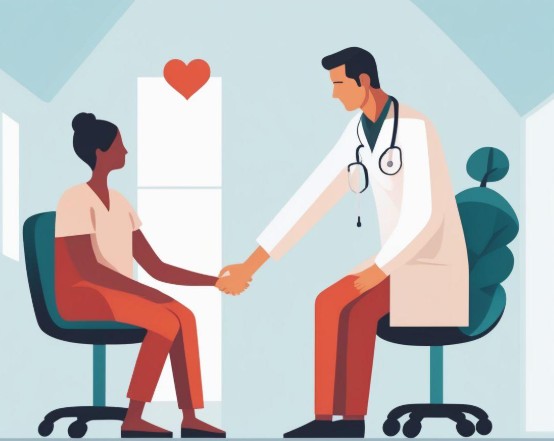From a “Blip” in the Data to a Breakthrough Molecule: How Scientific Innovation and Bold Thinking Are Reimagining Heart Failure Treatment
From a “Blip” in the Data to a Breakthrough Molecule: How Scientific Innovation and Bold Thinking Are Reimagining Heart Failure Treatment
Heart failure and resistant hypertension are among the world’s most stubborn and deadly cardiovascular conditions. More than 20 million people are affected globally, and despite decades of medical advances, millions of patients still experience worsening symptoms, hospitalizations, and a high risk of death. Traditional drugs often fail to solve the underlying problem or come with side effects that make long-term use difficult. In resistant hypertension, even medication combinations fail to lower blood pressure in a significant portion of patients.
For years, the pharmaceutical industry has been focused on blocking harmful pathways – stopping what goes wrong in the body. But what if, instead of blocking, we could activate the body’s own protective systems? What if we could teach the heart to heal itself?
This is the scientific and medical innovation story behind Novartis’s development of a new biologic molecule – one that could transform how we treat heart failure and resistant hypertension. It’s a story of risk-taking, deep molecular insight, unexpected discoveries, and the power of refusing to accept “impossible.”
Why current treatments aren’t enough
Heart failure: The heart is too weak to pump blood effectively. Patients struggle with fatigue, swelling, shortness of breath, and frequent hospital visits.
Resistant hypertension: High blood pressure that does not respond to standard medications increases the likelihood of heart attack and stroke.
Existing drugs target symptoms or try to block harmful hormonal pathways. While helpful, they don’t always work – and they rarely repair underlying damage. Patients often need multiple pills a day, leading to low adherence and poor outcomes.
The medical community urgently needs a therapy that works with the body, not against it – and that’s where the NPR1 pathway enters the picture.

The biological pathway with untapped potential: NPR1
When the heart is under stress, it produces natriuretic peptides – natural hormones that tell the body to:
- Lower blood pressure
- Reduce fluid retention
- Ease arterial stress
- Protect the heart from damage
These peptides activate a receptor called NPR1 (natriuretic peptide receptor 1). When NPR1 is activated, a beneficial cascade begins. The heart gets relief, just like with fitness & exercise. The problem? In heart failure, the body’s natural peptide response isn’t strong enough.
The solution seemed simple in theory: activate NPR1 with a drug.
But in practice, it was one of the most difficult puzzles in cardiovascular medicine.
Competitors tried. they failed. Novartis looked closer
Another pharmaceutical company had already tried to activate NPR1. Their results? Basically no activity. They published the data, then abandoned the project. End of story.
But when Novartis researcher John Diener reviewed the data, he spotted something subtle – a small “blip” of activity that others had ignored.
Most researchers would have walked away.
Instead, Diener saw possibility.
He teamed up with scientist John Dominy, and the two began asking a powerful question:
What if we could squeeze more activity out of this pathway using a different approach?
This question changed everything.
Doing what the industry rarely does: activating instead of blocking
In drug development, blocking a pathway is relatively straightforward. You stop something from working. But activating a pathway – turning it on with precision – is far more complex.
As Dominy explained:
“It’s easier to break something than to make something better.”
Despite the difficulty, they believed activation held the key to a true breakthrough in heart failure and resistant hypertension. This belief drove them to experiment, collaborate, and challenge traditional methods.
The turning point: a monoclonal antibody with a bold mission
Diener proposed using a monoclonal antibody – a biological molecule engineered to bind to a specific target in the body – to activate NPR1. Antibodies are usually used to block receptors or mark targets for destruction. Activating a receptor with an antibody was almost unheard of.
Initial attempts showed more activity than competitors had achieved, but not enough to be clinically meaningful. The approach needed something more.
This is where the story becomes a masterclass in scientific innovation.
Enter Michael Romanowski: precision protein engineering
Michael Romanowski, an expert in protein structure and expression, joined the project. He identified a tiny detail on the protein’s surface – a small residue that was common in other species but different in humans.
Changing that one amino acid residue dramatically improved protein stability and expression.
This wasn’t just a small improvement – it was transformative. It allowed the team to determine the first-ever structure of human NPR1.
Now they had a molecular blueprint. They could finally see how to build a drug that activated the receptor.
When standard tools fail: invent your own
With the structure in hand, the team, in collaboration with biotech company Morphosys, began creating antibodies that could bind to NPR1. They used the standard process called affinity maturation to optimize binding.
It failed.
Most research teams stop here. But Diener didn’t.
He began mixing and matching different antibody clones, creating hybrid molecules no one had tried before.
This unconventional move led to the breakthrough moment.
“There were a couple of these mix-and-match hybrid clones that resulted in a huge increase in activity,” Dominy recalls.
That surge in activity became the basis for the final candidate molecule, now known as XXB750.
Scientific first: a molecule that binds in a completely new way
Most drugs bind to the same receptor site that natural molecules use. But the final molecule did something radical:
It did NOT bind to the natural peptide pocket.
Instead, it bonded outside that pocket – activating the receptor from a totally new direction.
This means XXB750 represents an entirely new class of therapeutic molecule.
A scientific first.
A platform for future discoveries.
A milestone in receptor biology.
Why a biologic drug was the right choice
Novartis had also explored a traditional chemical compound approach. But several problems made it unworkable:
- Chemical activators of NPR1 had poor physical properties
- They were large, complex, and “ugly” molecules
- They failed to reliably trigger receptor activation
- Side effects were unpredictable
A biologic antibody, on the other hand:
- Targets a single receptor with precision
- Has fewer off-target effects
- Stays in the body longer
- Can be engineered with high control
This decision set the stage for a major medical benefit.
Medical impact: a once-a-month therapy
One of the biggest challenges in heart failure and hypertension treatment is adherence. Patients often take multiple pills every day, leading to missed doses and worsening disease.
XXB750 was designed differently.
It’s a once-a-month injection.
This means:
- Less burden on patients
- More consistent control of symptoms
- Better long-term outcomes
- Improved quality of life
In heart diseases, adherence isn’t a convenience – it’s survival. This delivery model solves a major real-world problem.
Faster, safer clinical trials
Biologic drugs like XXB750 typically:
- Have fewer systemic side effects
- Target only the intended receptor
- Can move faster through safety testing
While it took years of research to build the molecule, it could reach patients faster than traditional drugs once in the clinical phase.
This is a hidden advantage of biological innovation: the front-end work accelerates the back-end impact.
Collaboration fueled the breakthrough
This story is not about one scientist – it’s about a culture of innovation.
Key elements of success:
- Cross-disciplinary collaboration (biology, protein engineering, antibody design, structural analysis)
- Attention to tiny data signals
- Willingness to take scientific risks
- Upper management support for unconventional ideas
- Automated lab workflows that accelerated discovery
- Partnerships with specialized biotech companies
It is proof that innovation thrives when expertise and courage intersect.
A glimpse into the future of cardiovascular medicine
XXB750 is now in early-stage clinical trials. If successful, it could become:
- The first drug to activate NPR1 via a novel binding site
- A new standard for treating heart failure and resistant hypertension
- A platform technology for other pathway-activating biologics
More importantly, it proves that the heart’s natural healing mechanisms can be amplified – not just protected, but activated.
This is more than a drug.
It is a new way of thinking about disease.
Learn more about the full discovery journey
The development of this molecule involved years of thinking differently, breaking conventions, and trusting the science. For readers who want the complete inside view – from the first “blip” in the data to the pioneering clinical candidate – dive into the full story:
Developing a new molecule for heart failure treatment
This is how bold science becomes life-changing medicine.

